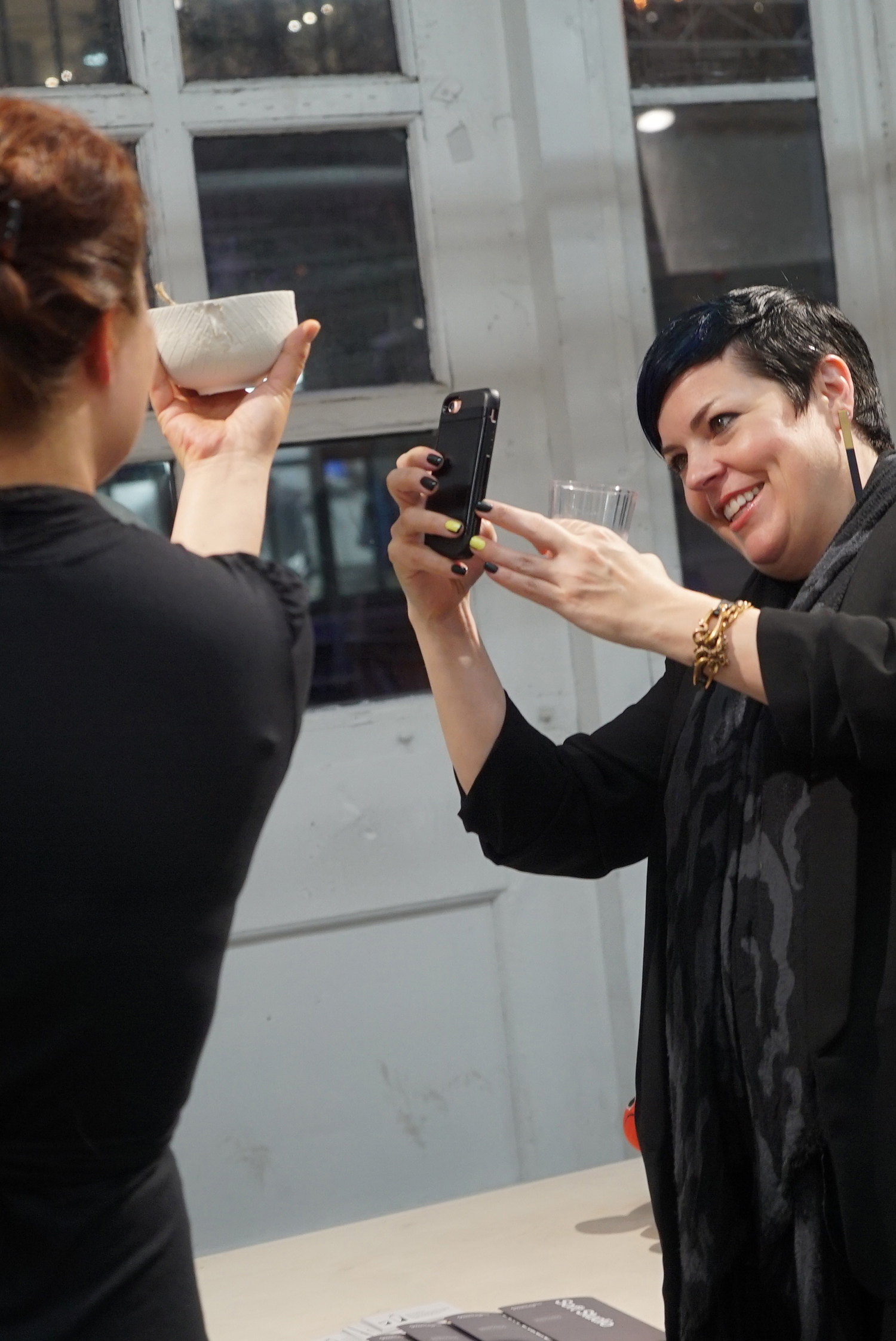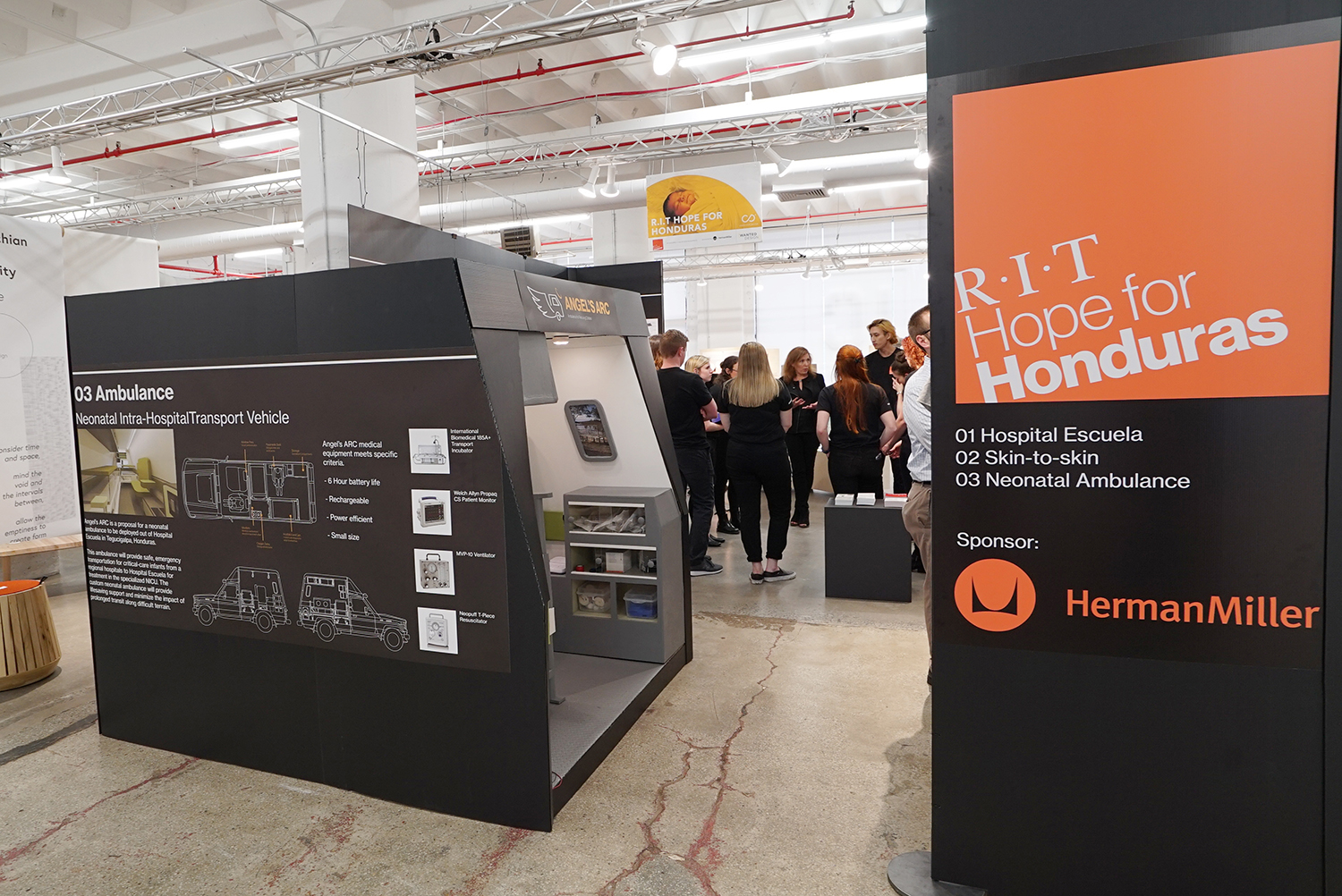RIT's large Design Week presence kicks off with difference-making exhibits
Rochester Institute of Technology’s heavy presence at NYCxDESIGN — New York City’s annual celebration of design that attracts hundreds of thousands of attendees from across the world — began May 16 with a pair of exhibits at WantedDesign Brooklyn at Industry City.
A swarm of visitors to RIT’s sizable footprint in the space learned about the university’s multidisciplinary efforts aimed at making a difference on a global scale.
The two RIT displays that opened May 16 were:
1. The RIT Hope for Honduras initiative — a collaboration with Little Angels of Honduras and Hospital Escuela (Honduras’ largest public hospital) to bring optimal maternal and infant care to the Central American country and diminish its high infant mortality rates. RIT Hope for Honduras is directed by Mary Golden, assistant professor and chair of RIT’s interior design program, and involves extensive work by interior design, industrial design and Kate Gleason College of Engineering students.
2. A selection of textile products from RIT industrial design assistant professor Melissa Dawson’s Soft Studio classes. The chosen designs demonstrate the breadth of the coursework as each of the 10 products represent a different category to cover the topics Dawson has taught: healthcare, footwear, storage and organization, toys, outerwear, headwear, travel, bags, wearable technology and experimental.
The RIT Hope for Honduras booth, sponsored by Herman Miller, highlighted several components of the initiative, including:
- A proposed 12,000-square-foot expansion of Hospital Escuela’s neonatal intensive care unit (NICU) that includes intermediate care spaces, preemie exam tables, a mobile education unit, a skin-to-skin care outpatient clinic and more.
- Preemie wraps from one of Dawson’s Soft Studio classes that were designed to facilitate skin-to-skin incubation care, an alternative to conventional neonatal care for low birth weight infants. The Hope for Honduras team found that the practice in low- and middle-income countries can reduce hospital stays for premature infants, thus lessen the chance of hospital-acquired infection, time in overcrowded hospital wards and financial burden.
- A proposed design of a neonatal ambulance that would provide safe, emergency transportation for critical-care infants from regional hospitals to Hospital Escuela for treatment in a specialized NICU.
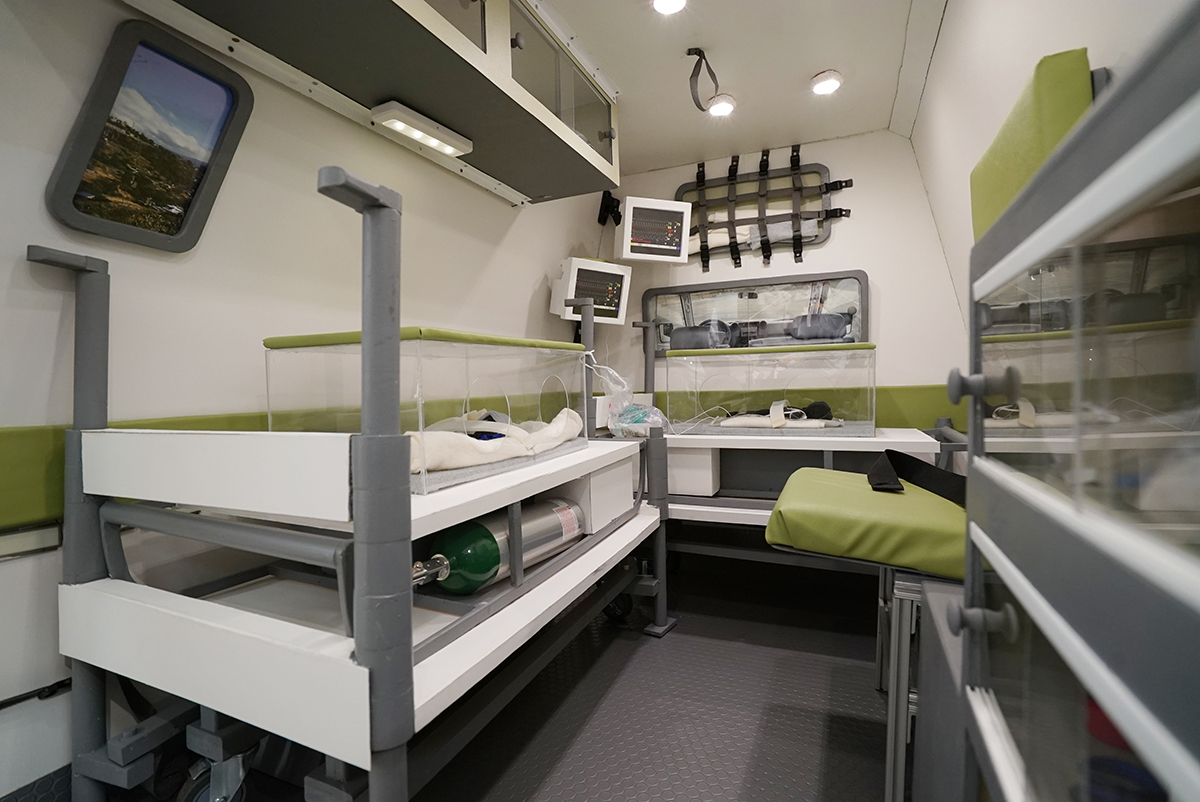
“It’s such a special experience to showcase their work at a global venue,” Golden said. “The students have been engaged in a year-long project — a lot of energy, commitment and focus on making a difference in Honduras. To be able to share that in this kind of venue has been really incredible.”
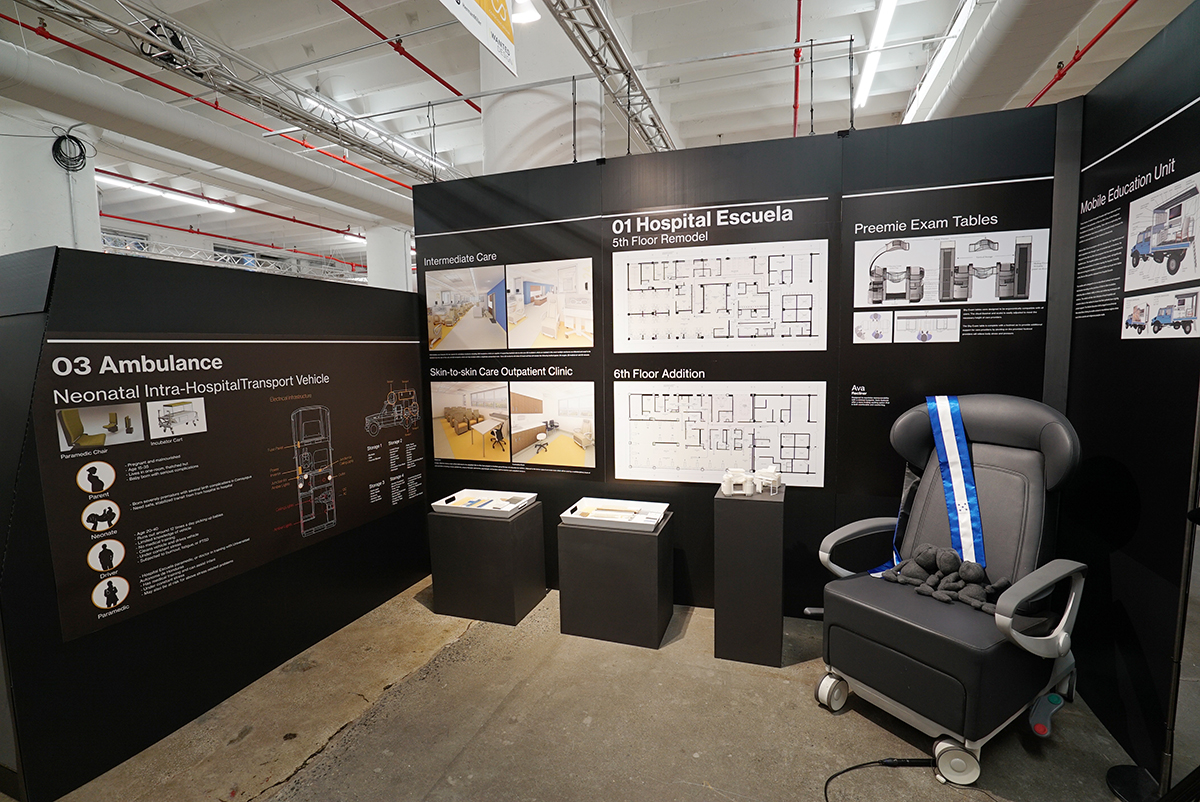
The project has afforded students and faculty from different areas of campus the opportunity to “share solutions from their own lens of expertise and learn each other’s approaches so that we can come together to create a viable solution,” according to Golden.
“I think as professionals in the field, no matter what discipline we’re coming from, we all work together at the end of the day,” Golden said. “This is an opportunity for students to really get a taste of that and be able to create those interdisciplinary dialogues.”

The Soft Studio exhibit, co-curated by Dawson and Josh Owen, industrial design professor and program chair, featured soft goods projects from the last few years by undergraduate and graduate students and alumni — some of whom were present at the display.
“We try really hard as designers to make the world a better place,” Dawson said. “So we really focus a lot on user experience and how we can help whoever is using our product and make their life better.”
“It’s pretty exclusive to have work here and it’s a great honor,” Dawson added of being part of NYCxDESIGN.
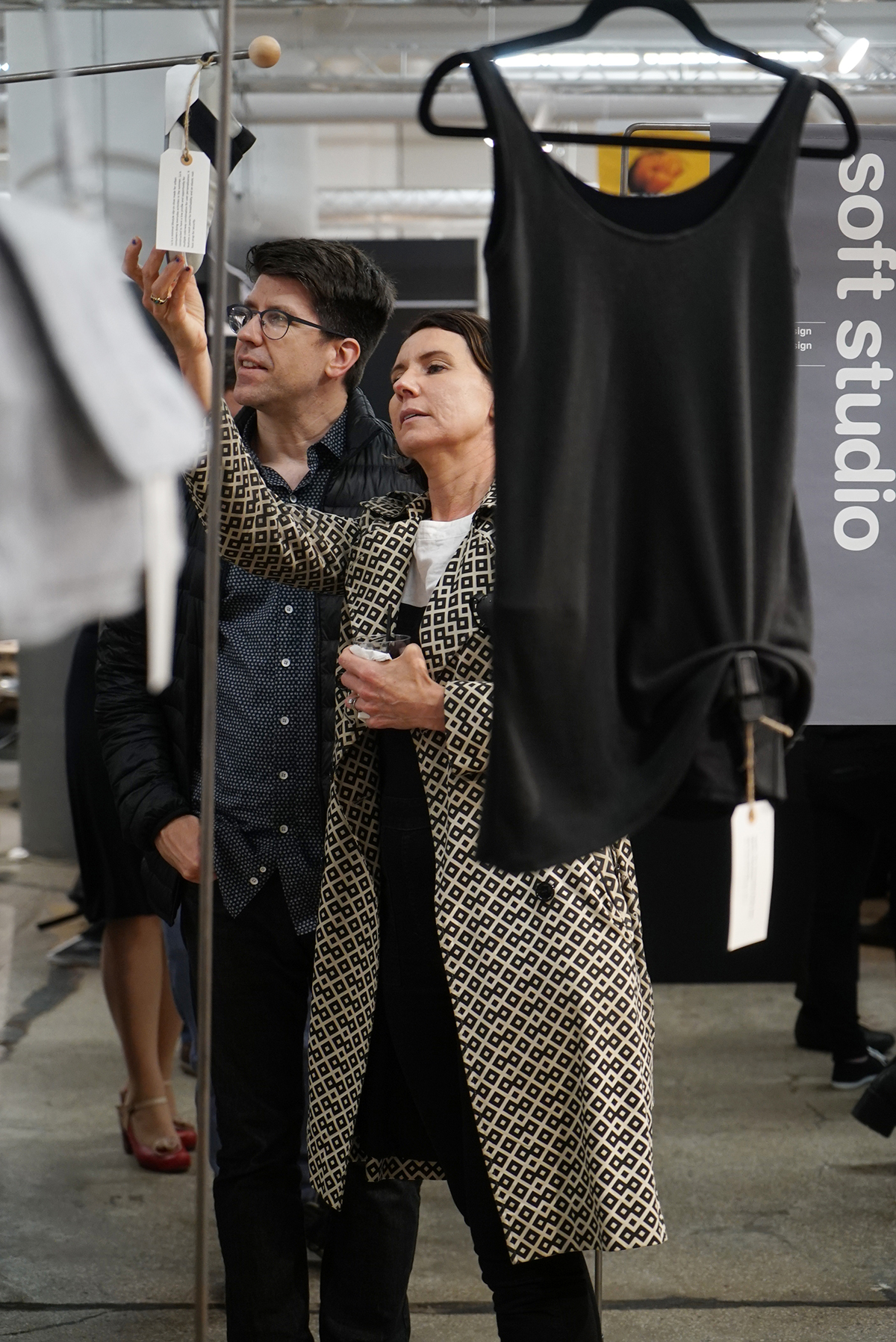
The WantedDesign Brooklyn exhibits are scheduled to be on view through Monday, May 21.
To learn about other events RIT is involved with during NYCxDESIGN, visit here.
